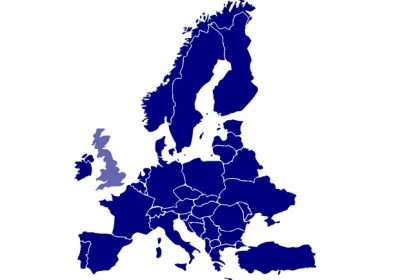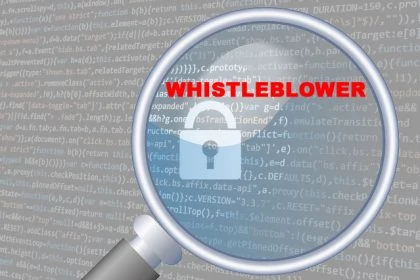The BPatG ruled on an action for revocation against the patent ‘ Ranpak packaging system ‘: The patent on the Ranpak packaging system was maintained in GER with restrictions. This was because the automation of the packaging process had not been obvious to a person skilled in the art.
 Ranpak Corp. (USA) is a globally known name in packaging and also keeps the business press busy. In 2019, One Madison, a so-called SPAC company, bought Ranpak. According to Wall Street Journal report, One Madison said it would make Ranpak a publicly traded company with an enterprise value of about $1.1 billion; the purchase price had already been $950 million – in cash.
Ranpak Corp. (USA) is a globally known name in packaging and also keeps the business press busy. In 2019, One Madison, a so-called SPAC company, bought Ranpak. According to Wall Street Journal report, One Madison said it would make Ranpak a publicly traded company with an enterprise value of about $1.1 billion; the purchase price had already been $950 million – in cash.
European patent on Ranpak packaging system
A European patent of Ranpak (claiming priority for a US patent)- for a packaging system and void-fill system – was heard by the Federal Patent Court. The patent in suit of Ranpak Corp. (European Patent 1 556 278) was not patentable (Art 138(1)(a) in conjunction with Art 54 and 56 EPC). Art 54 and 56 EPC, Art. II § 6(1)(1) IntPatÜG), the applicant had asserted in 2018 in Germany with a nullity action, namely that it was neither novel nor inventive. To prove this, the applicant referred to other publications in the field of packaging and packaging systems that had already been published before the patent application for the patent in suit was filed.
Prior art
As usual in such cases, the Federal Patent Court (Bundespatentgericht (BPatG)) therefore had to clarify whether the patent in suit of Ranpak Corp. was distinct from the prior art – and whether the invention would have presented itself to a person skilled in the art as an obvious solution. With regard to the prior art, the BPatG referred in particular to the patent specification under US Patent No. 5 871 429 (referred to as D1 in the proceedings), which teaches a packaging system with a measuring probe for detecting the cavity in a container. The Dokument D2 (a former press release of the applicant about a void-fill system which was published as evidence) was also examined in detail by the BPatG.
The subject-matter of the patent in suit on the Ranpak packaging system is, according to the patent specification, a packaging system for providing a controlled amount of cushioning material to fill a void in a container in which one or more objects are packed for shipment. The main point in dispute was whether and to what extent the patent claims relating to scanners, sensors and stop gates were already known or would have been obvious to a person skilled in the art before the patent application was filed.
The applicant claimed that the skilled person would know that he could ensure controlled operation of the system in a simple manner by means of the “stop-gate” (according to claim 10). And the use of a conveyor system or conveyor belt to transport unit loads, such as cartons or totes, through a scanning area was a measure generally known in the art. The particular combination of width sensor, height sensor and contour sensor of the patent in suit was a contour sensor of the objects in the container (volumetric sensor). But, the applicant argued that a contour sensor was disclosed by document D1.
Inventive step: no mosaic-like features
However, the BPatG did not entirely follow these arguments. Although the measuring and control technology to be used for filling the cavity in the container was obvious to a person skilled in the art on the basis of D1, the automation of the packaging process through the use of robots or automatic handling machines was not. However, it was only through this connection of automation that the controlled transport of the containers to and from the handling machine was necessary.
Document K21 (WO 98/21101 A1), cited by the applicant in relation to the stop-gate, teaches such an automated cavity filling system. However, on the basis of D1, which provides a suitable starting point for the skilled person to arrive at features 1 to 1.5H3 or 15 to 15.5H3 in conjunction with K20, there was, in the court’s view, no reason to refer to K21. If a person skilled in the art would again start from K21, he would not arrive at features 1.3.1 / 15.3.1 and 1.3.2 / 15.3.2 in an obvious way.
We would like to remind you at this point that for the examination of inventive step, each publication must be considered individually; a person skilled in the art should not be able to combine features from different publications in a mosaic-like manner. The BPatG complied with this in its decision.
BGH decision ‘paint supply system’
The court also discussed the 2014 BGH decision on paint supply systems (‘Farbversorgungssystem’, BGH, X ZR 139/10). According to this decision, a mechanical engineering solution can be obvious to a skilled person even without concrete suggestions in the form of explicit references from the prior art, if it is a means belonging to the general technical knowledge and is objectively appropriate. Was this not also true in the present case?
However, the BPatG emphasised that such a case was not present here, if only because the automation of the packaging process was not obvious to a skilled person starting from D1. Moreover, it did not follow from the decision of the Federal Court of Justice that the use of a means of general knowledge was always obvious if it was objectively expedient; rather, a further prerequisite was that it appeared so to the skilled person in the context to be assessed. This was not the case in the present case.
BPatG: Patent on Ranpak packaging system in GER restricted
Ultimately, the BPatG ruled that the patent in suit on the Ranpak packaging system was not patentable in Germany to the extent of the challenged claims 1, 2, 10 and 15 in the granted version and in the versions according to auxiliary requests 1 and 2. However, the Ranpak patent on the packaging system remains patentable in Germany in the version according to auxiliary request 3.
De facto, claims 1 and 15 from the European patent on the Ranpak packaging system remain in force in Germany; they have also been supplemented. New additions to this version were, above all, features 1.5H3 and 1.6H3 and 15.5H3 and 15.6H3. In this version according to auxiliary request 3, the invention was new and inventive, the court ruled.
The following features were new in the version according to auxiliary request 3:
- A conveyor for conveying the container though the scan area and
- A stop gate associated with the conveyor for controllably permitting passage of containers into the scan area
Deleted:
- A void fill system as set forth in claim 1, further comprising a convoyor for convoying the container through the scan area.
The use of a conveyor for conveying the container through the scan area according to feature 1.5H3 or 15.5H3 was already disclosed by D1, BPatG explained, but a stop gate associated with the container conveyor in order to allow the passage of a container into the scan area in a controlled manner according to feature 1.6H3 or 15.6H3 was not obvious from a synopsis of the cited prior art.
Protection or defence of your invention also an issue for you?
Our attorneys have many years of expertise in patent and trade mark law as well as in the entire field of intellectual property and are entitled to represent you before any court – in Germany and internationally.
Please do not hesitate to contact us if you are interested.

Sources:
Judgement of BPatG ‘Ranpak packaging system’, 4 Ni 29/18 (EP)
Image:
tianya1223 | pixabay | CCO License







Leave a Reply